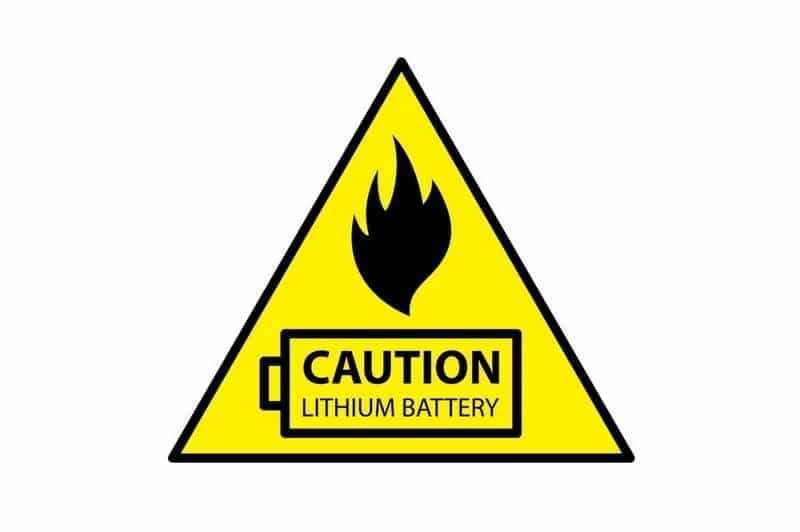
March 31, 2025


Large-scale battery fires are a hot topic, especially since the Moss Landing fire. To help industry ensure best practices for lithium-ion-based battery energy storage (BESS) projects, the American Clean Power Association (ACP) published a comprehensive safety framework that is informed by previous fire incidents at BESS facilities.
ACP’s Battery Storage Blueprint for Safety outlines key actions and policy recommendations for state and local jurisdictions to regulate battery storage, enforce the country’s most rigorous safety standards, and ensure coordination on safety and emergency response in all communities.
“At its core, energy storage facilities are critical infrastructure designed to protect people from power outages,” said ACP VP of Energy Storage Noah Roberts. “Like substations, transformers, and transmission lines, energy storage systems deliver needed power in times when we need it most. Every community across the country should have confidence that the battery storage facilities keeping their lights on and utility bills affordable adhere to the most rigorous safety requirements. This is why we have released the battery storage industry’s comprehensive, actionable blueprint for safety.”
ACP BESS Safety Assessment
The Battery Energy Storage: Blueprint for Safety was informed by an assessment, conducted by the Fire and Risk Alliance, that analyzed historical data and scientific studies on fire incidents over the last decade in the U.S. The findings, published in Assessment of Potential Impacts of Fires at BESS Facilities indicate no impact to public health or surrounding communities from the incidents studied.
The assessment’s key finding reveals that, in all reviewed cases of environmental sampling related to the BESS fire events, no previous incidents resulted in contaminant concentrations that would pose a public health concern or require further remediation.
Moss Landing impact
As the investigation into the fire at the Moss Landing facility—increasingly viewed as an anomaly, and a system located in a 1950’s gas turbine hall—is ongoing, the assessment underscores the importance of modern designs and recently published standards: “Many documented BESS fires involved early-generation systems that predate modern safety standards. The implementation of robust national codes and advancements in ESS design have significantly improved fire safety and reduced risks.”
Applying NFPA 855
A critical component of the Blueprint is understanding where the industry has been successful in efforts across the country to advocate for enforcement of the National Fire Protection Association’s standard for energy storage, NFPA 855. The set of standards includes exhaustive requirements and ensures facilities use certified batteries and equipment.
In Michigan and Indiana, the energy storage industry helped advance new laws requiring compliance with NFPA 855. In Maryland and New York, the energy storage industry supported new regulations that enforced the latest NFPA 855 requirements. In California, the industry offered a suite of policy recommendations to address unique safety questions arising from the Moss Landing incident, including enforcing key provisions of NFPA 855.
The battery energy storage industry believes that state and local regulations will play a vital role in ensuring that every community has access to this important technology. In addition to working with fire officials and state policymakers to advance safety standards, the industry has developed a framework to help local governments effectively regulate the construction of battery storage facilities.
ACP’s Utility-Scale Battery Energy Storage Systems Model Ordinance was designed with NFPA 855 as the core principle and integrates the national safety standard’s requirements throughout permitting rules.
With the 2026 edition of NFPA 855 expected to be finalized and published in 2025, the energy storage industry is already incorporating key enhanced requirements and is ready to work with states and local governments to implement the latest version of the standard. This will include updating the Model Ordinance, to be re-released in 2025.
ACP’s Policy Proposal
ACP believes policy makers will play an important role in helping to ensure batteries continue to be deployed responsibly and effectively. To that end, the energy storage industry has developed a three-part strategy that includes policy recommendations and safety requirements aimed at holistically addressing concerns generated from the Moss Landing fire.
The following policy proposal and strategy recommendations can help minimize both the likelihood of future incidents and potential impacts:
- Requiring all battery storage facilities to comply with the latest published version of NFPA 855. State and local governments should proactively adopt and enforce this safety standard.
- Reviewing facilities built prior to the first adoption of NFPA 855 in the Fall of 2019 and considering a hazard mitigation analysis (HMA). State and local governments can require an HMA and corrective action, including the use of fire barriers or engineered solutions to meet large-scale fire testing requirements. All facilities should maintain an emergency response plan submitted with the local fire and emergency response authority.
- The industry and state and local governments should regularly coordinate on safety planning, inform siting and permitting requirements, continuously improve safety practices, and regularly provide training to facility operators and the fire service.
The energy storage industry is committed to acting swiftly, in partnership with fire departments, safety experts, policymakers, and regulators to enact these recommendations.
Source link

